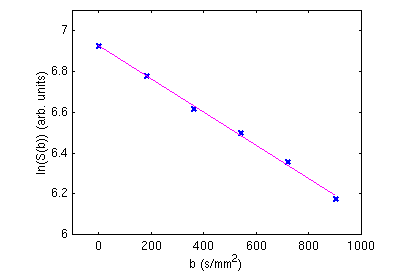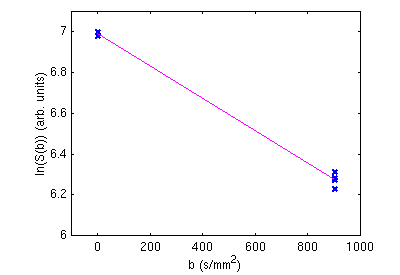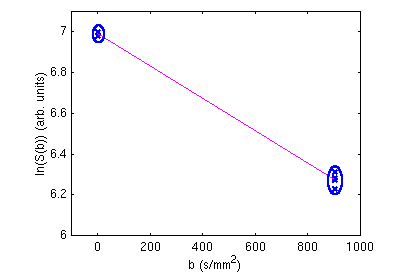


How many repetitions should I do at each b-value?
When you have time to do multiple repetitions for each direction, there are basically three approaches to take. For example, with time for 6 measurements, you can do:



The literature suggests that option 2 and 3 are superior to option 1, see for example Xing, D., et al: "Optimised diffusion-weighting for measurement of apparent diffusion coefficient (ADC) in human brain", Magn Reson Imaging 15, 771-784 (1997) (Medline citation) or Jones, DK, Horsfield, MA, and Simmons, A: "Optimal strategies for measuring diffusion in anisotropic systems by magnetic resonance imaging. MRM 42, 515-525 (1999) ( Medline citation).
In addition, simulations (not published) have shown that options 2 and 3 are basically equivalent. Of the two, we have chosen option 2 because it computationally applies to option 1 as well.